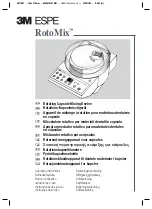
Preliminary alignment of the steady rest
1. Slightly tighten the fastening screws of the steady rest
(approx. 3 Nm).
2 Clamp a test mandrel with a ground external diameter bet-
ween the centres similar to the work piece to be supported
later. Check the test mandrel for axial and radial run.
3 Apply the operating pressure set at the ”Clamping” connec-
tion to the hydraulic cylinder causing the clamping arms to
move out of the steady rest arm and to close around the test
mandrel. The steady rest should move slightly on the holder
to adjust itself.
4 Use a measuring gauge to check the X and Y axles of the
test mandrel whether it has been pressed from its original
centre by the centring force of the steady rest.
5 If this is the case, the steady rest has to be aligned manually
in such a way that the test mandrel is not subjected to any
centre displacement (within approx. 0.01 mm).
6 Tighten the fastening screws of the steady rest correspon-
dingly.
11
Oiled air blocking
The use of a seal air system is recommended for a correct
operation of the steady rest. The operating pressure may
vary between a minimum of 3 bar and a maximum of 6 bar.
The air has to be dehumidified and enriched with lubricating
oil. The lubrication frequency should amount to 1 drop
every three minutes, whereby oil with a viscosity of about
70 centistoke should be used.
The application of pressure is intended to prevent dirt from
penetrating into the inside of the steady rest body, which
could affect the correct function. In addition, the air--oil mix-
ture lubricates the internal sliding surfaces, and thus gua-
rantees a permanent function of the unit.
Filter -- pressure governor --
lubrication assembly
min. 3 bar max. 6 bar
Measuring gauge to check
the radial alignment
Measuring gauge to check
the axial alignment
Fig. 2

































